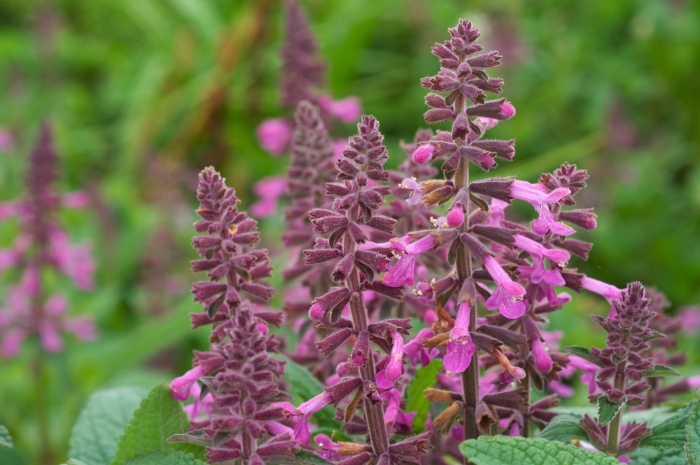Coastal Hedgenettle
(Stachys chamissonis)
Coastal Hedgenettle (Stachys chamissonis)
/
/

Eric Hunt
CC BY-SA 4.0
Image By:
Eric Hunt
Recorded By:
Copyright:
CC BY-SA 4.0
Copyright Notice:
Photo by: Eric Hunt | License Type: CC BY-SA 4.0 | License URL: https://creativecommons.org/licenses/by-sa/4.0 | Uploader: Eric in SF | Publisher: Wikimedia Commons | Title: Stachys_chamissonis.jpg | Notes: {{Information |Description={{en|1=Little white flowers in Nashville, Tennessee. Each flower is approximately 5 mm across.}} |Source={{own}} |Author=[[User:Kaldari|Kaldari]] |Date=2010-03-28 |Permission= |other_versions= }} |



















































Estimated Native Range
Summary
Stachys chamissonis, commonly known as Coastal Hedgenettle, is a perennial herb native to coastal regions of western North America, including California and Oregon, where it thrives in moist, open habitats such as coastal prairies, bluffs, and streambanks. It can grow erect stems ranging from 1 to 2.5 meters (3.3 to 8.2 feet) tall, and is characterized by its hairy, glandular, and aromatic nature. The leaves are typically broad and coarse, adding a lush texture to the plant’s appearance. During the summer, Coastal Hedgenettle produces an inflorescence of interrupted clusters with up to six flowers each. The flowers feature a deep pink tubular corolla over 3 centimeters (1.2 inches) long, which are quite showy and attract pollinators such as bees and butterflies. The corollas are nestled within hairy calyces of purple or purple-tinged sepals, adding to the plant’s ornamental value.
Coastal Hedgenettle is appreciated for its wildlife value and its ability to adapt to a range of soil conditions, although it prefers moist environments. It is often used in native plant gardens, restoration projects, and as a border plant where its height can provide a backdrop to lower-growing species. In cultivation, it requires full sun to part shade and medium amounts of water, with a preference for soils that have slow drainage. While not commonly afflicted by diseases, it can be susceptible to root rot in overly wet conditions. This plant is not known for being invasive and is considered a beneficial addition to gardens focused on native species and ecological landscaping.CC BY-SA 4.0
Coastal Hedgenettle is appreciated for its wildlife value and its ability to adapt to a range of soil conditions, although it prefers moist environments. It is often used in native plant gardens, restoration projects, and as a border plant where its height can provide a backdrop to lower-growing species. In cultivation, it requires full sun to part shade and medium amounts of water, with a preference for soils that have slow drainage. While not commonly afflicted by diseases, it can be susceptible to root rot in overly wet conditions. This plant is not known for being invasive and is considered a beneficial addition to gardens focused on native species and ecological landscaping.CC BY-SA 4.0
Plant Description
- Plant Type: Herb
- Height: 2.5-3 feet
- Width: 1.5-3 feet
- Growth Rate: Moderate
- Flower Color: Pink, Purple
- Flowering Season: Summer
- Leaf Retention: Deciduous
Growth Requirements
- Sun: Full Sun, Part Shade
- Water: Medium
- Drainage: Slow
Common Uses
Bee Garden, Bird Garden, Butterfly Garden, Deer Resistant, Fragrant, Hummingbird Garden, Low Maintenance, Rabbit Resistant, Showy Flowers
Natural Habitat
Coastal prairies, bluffs, and streambanks in western North America
Other Names
Common Names: Coastal Hedge-Nettle, Épiaire De Chamisso
Scientific Names: , Stachys chamissonis, Stachys cooleyi,
GBIF Accepted Name: Stachys chamissonis Benth.